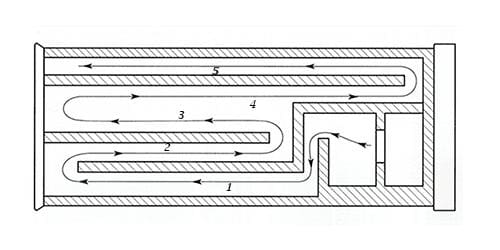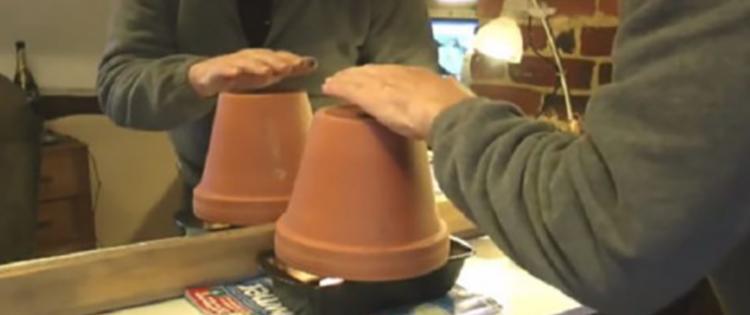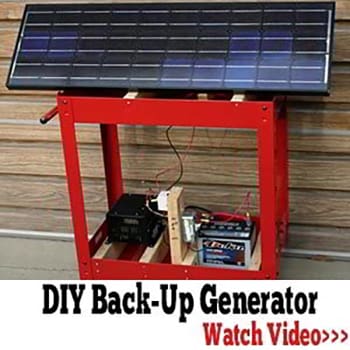Everything nowadays depends on electricity, and most people feel lost and powerless when they suddenly discover their house doesn’t have electricity anymore. It’s one of those things most people take for granted! But one of the major problems a long-term blackout generates is the fact that you will soon realize that inside your house it’s pretty much as cold as it is outside. Except for the wind!
So, how can you actually heat your house when there’s no electricity?
First of all, it’s important to be prepared. A proper thermic insulation of your house is mandatory, no matter what. The benefits are obvious even in normal conditions: a house that is warm in winter and cool in summer as well as lower electricity bills, just to mention 2 of them. You need to pay extra attention to doors – good weather stripping and door sweeps are a great help – and windows – make sure there are no cracks in the glass or frames. Minimize heat loss by checking air vents, for instance.
The second step, especially in extreme winter conditions, is to wisely chose the space to live. The whole family should bundle up in a small room, that is easier to heat. A sunny room is better, sunshine beams that pass through windows will actually heat the room. Carpets, rugs or even blankets are definitely better than hardwood or tile floors. Cooking generates a lot of heat along with the hot steam, so it would be a great idea to have direct access to the cooking area in your kitchen. Also, you should thonk of alternative cooking solutions, since microwave ovens won’t work and gas might also be unavailable during a major electricity blackout.
There are alternative heat sources, other than those depending on electricity. Some of the best ones are quite traditional: the fireplace and the wood-burning stove.
The fireplace should be fueled with wood. Gas fireplaces don’t really generate heat, they are mainly decorative. Wood fueled fireplaces generate some heat, but without improvement, most of the heat is simply lost through the chimney. This is why you should install a convection insert – it’s a series of metal tubes that surround the fire and blow hot air in the room.
The wood-burning stove is a more efficient alternative. It involves a metal fire box that can be placed in the middle of the room, to radiate heat on all sides.
There are other heaters that also use wood as fuel. The metal box is placed inside a construction of terracotta tiles that also include the chimney. The chimney is not going straight up, instead it has many right angles, in order to keep the heat inside for a longer time. The teracotta tiles store heat while the fire is burning, and are effective up to 4-6 hours once the wood finished burning. This is also a more economical way of using wood for heating. In the picture you can see how such a stove looks on the inside.

A temporary wood-burning stove is another great emergency solution. The chimney runs out through a special opening in a window. Basically, cold air from the outside is drawn inside the stove, is heated by the fire and the smoke goes straight out the window. It is less efficient than the previous version, however you can use it on emergency situations and store it when it’s not needed. The best piece of advice is to buy one that uses wood, not wood pellets. Though more efficient, the ones that use pellets stop working when the pellet reserve is out, and it might be easier to find wood than pellets in an emergency situation!
Another thing that must be taken into consideration is that chimneys need to work properly to avoid all risks of monoxide intoxication. A monoxide detector might be useful!
According to users, a 3-bedroom house can be heated through the winter using about 2100sqm of wood, but this is just a rough estimation since it greately depends on the house insulation, winter temperatures and type od wood.
Egloo heaters are a small-scale alternative. They are a recent invention that uses the energy generated by a few burning candles. The terracotta dome stores the heat and radiates it in the room after the candles are blown out. It’s not much and you can’t expect to maintain a temperature of 64-68F just by using this method.
Propane heaters or gas catalytic heaters are a relatively new alternative. They are usually placed on the wall in the main room, but there also are some portable versions. They don’t need venting, which saves some heat and removes the risks related to smoke and monoxide. However, they do require a propane refill now and then if you use a tank.
Kerosene heaters are less expensive than propane heaters, but they should be used in well-ventilated areas because they use flames to provide heat. Also, carbon monoxide might also be an issue.
! Avoid using open fire in a room that is not even ventilated. Nothing more than candles, if we are speaking about fire, and even calndles need to be carefully watched for, to avoid accidents.
Active solar heating systems an be used to either heat the interior space or to save energy through a storage system and use it later. The system is expensive, compared to the previous alternatives, and it’s efficiency is still unclear in winter conditions, when sunlight is pretty scarce.
Small wind electric systems are also an alternative. However they are only suitable in specific areas and they are usually used as a complementary energy source. Both solar and wind systems are also highly vulnerable, since they are placed outside and can easily be damaged.
A generator would definitely help, not only with heating but also with other appliances that need electricity, light and water sources for instance. However, the cost is high and there might also be an issue concerning the fuel source.
What alternative method did you chose for your house, in the case of an unexpected blackout?
How To Build a Solar Heater from BEER cans for FREE
What really happens when you bury a shipping container (Video)
What Foods Can You Bury Underground For Winter?










I disagree with the gas fireplaces not giving off enough heat, I have a gas fireplace and it puts out quite a bit of heat and I also installed a blower in it for better circulation
Sure, that’s fine and good until the gas shuts down……